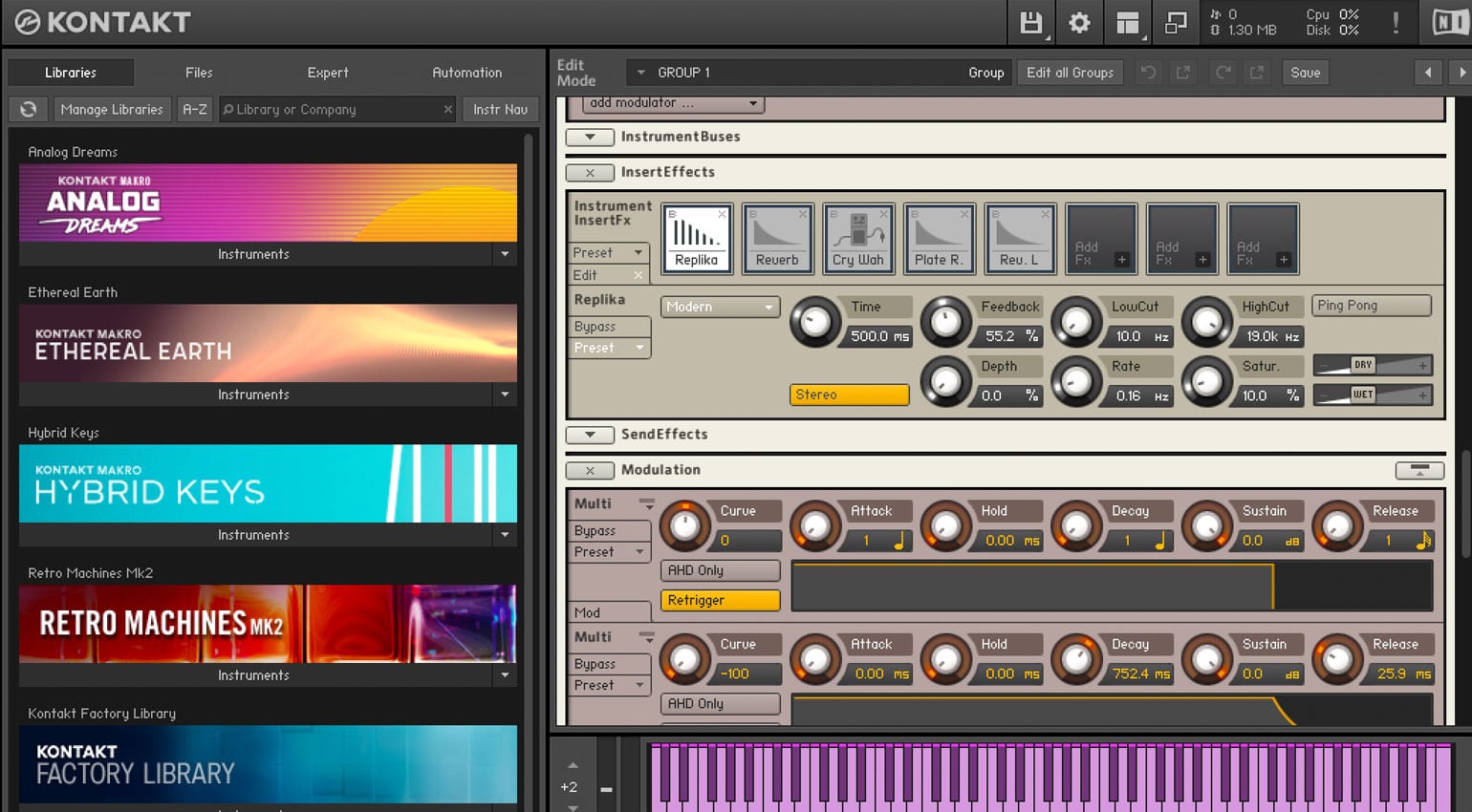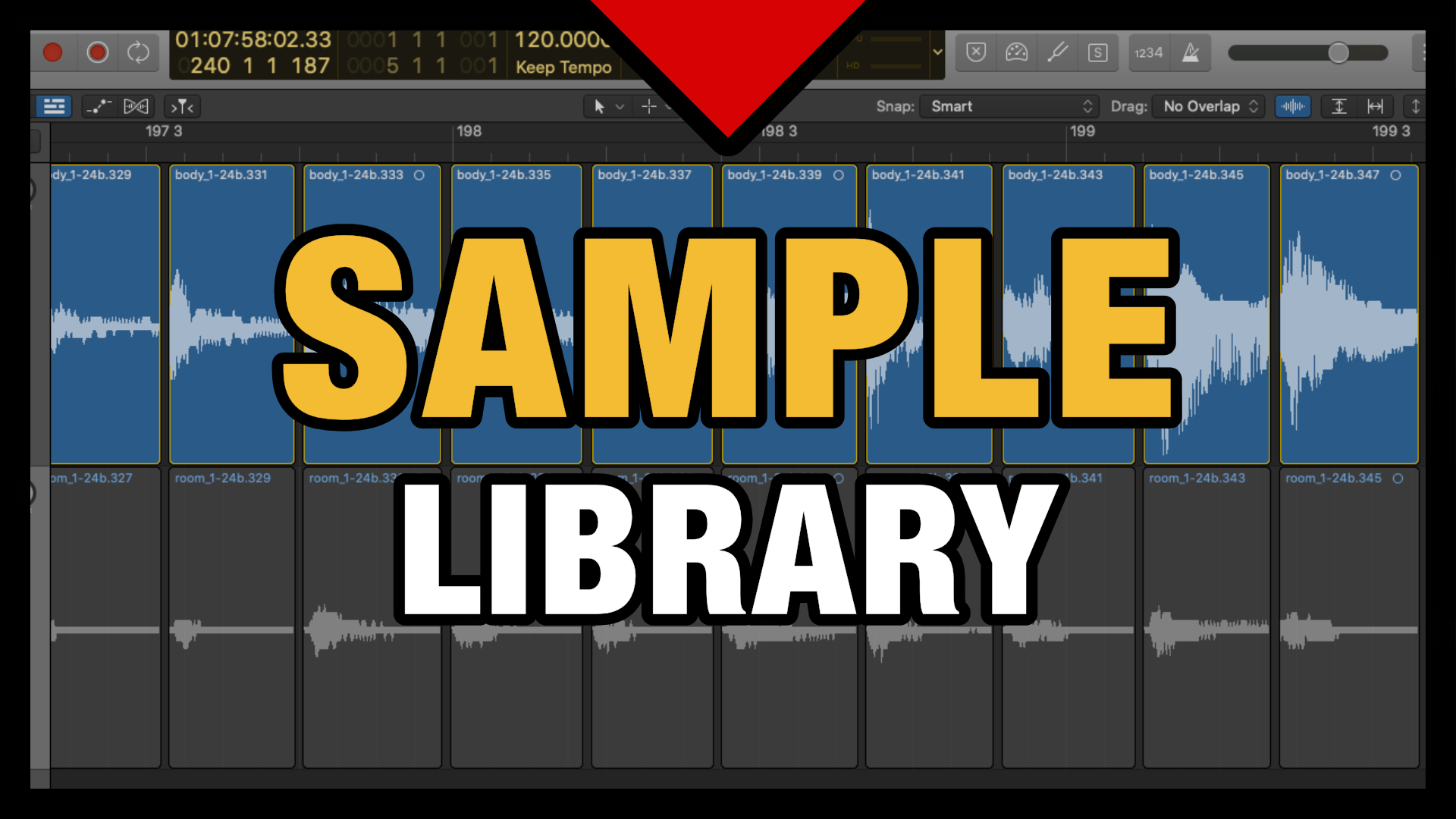

This would essentially call up the most “correct” interpretation of MIDI input. Theoretically, the perfect sampler instrument would have an independent recording for every combination of pitch, velocity, etc. As a result, MIDI input is able to recreate a realistic-sounding version of the instrument. MIDI input will tell the sampler which of these many samples to fire, creating a note with the proper pitch, velocity, articulation, and more. This is the way that many high-quality instrument emulations are made.ĭevelopers record countless takes of real instruments, covering all possible velocities and articulations. This is just what it sounds like: using multiple audio samples to populate the sampler rather than just one. We can avoid these problems through the use of multi-sampling.

Additionally, while granulation does a pretty good job of pitching the sample, it introduces unnatural artifacts as audio is pitched further from the original pitch. The same audio sample is used for every note-no human would ever be able to play so consistently. However, as you can hear, this instrument still does not sound as organic as a real instrument. Now, we have a sampler instrument that changes pitch and sustains like a real instrument would. We’ll be demonstrating this process with Ableton’s Simpler plug-in and this percussion hit:

Therefore, the simplest sampler would have one sample, which is pitched relative to playback speed. Pitch can be changed by playing the audio file at different speeds. In the simplest terms, a sampler instrument functions by firing off a sample at different pitches. Don’t worry if you don’t have access to these plug-ins all of these functions are common in the average sampler. We’ll be working in Ableton Live’s Simpler and Sampler plug-ins, as well as the sampler in Native Instrument’s Kontakt. Our main focus today will be these sampler instruments with melodic capabilities. This can be done with simple audio samples of the instrument, allowing any average producer to create custom instruments.ĭevelopers for high-quality sampled instruments may even use a combination of sample playback and synthesis to recreate these types of instruments. The most involved type of sampler emulates a realistic-sounding instrument. Each pad was able to fire off different percussive or melodic samples, allowing for new possibilities like live remixing and the creation of custom drum kits. Others were used in a looping context, used to record and play audio back in a performance setting.ĭrum machines, which were monumental in the development of hip-hop and electronic music, function as samplers. The first samplers were designed to function similarly to wavetable synthesizers, using a sample of the wavetable as source audio. Given how prevalent hip-hop and electronic trends are in modern music, sampling could very well be one of the most influential advances in music.ĭuring their development, samplers themselves have taken many forms. The origins of hip-hop and electronic music (sampling genres like soul and R&B) are deeply rooted in these advancements. This accessibility resulted in an explosion of art and the study of previous musical traditions. You’ll notice that, on most of the graphs, there is a sudden increase in sampling between the 1970s and 1990s.ĭuring this time, the development of cheap sequencers and samplers allowed for musicians around the world to sample audio on their own. As early as the 1940s, musicians have been using existing recordings as musical material in new projects.Ĭheck out this infographic, which shows the use of sampling by genre over the past century. Sampling, by definition, is simply repurposing existing audio. As demonstration along the way, we’ll create a custom instrument from a percussion hit and a realistic-sounding piano.
#Custom kontakt library creator full
We’ll discuss everything from the simplest setup to full multi-sampling. In this article, we’ll go over the general process to create a custom sampler instrument. The sampling process is relatively simple, and using this process we can create a new instrument out of nearly any sound.
#Custom kontakt library creator software
Many software emulations of real instruments, like string, horn, and woodwind plug-ins, are possible through sampling and samplers. It is the basis of the sampler, one of the most common types of software instruments. Sampling is one of the most important aspects of modern music production.


 0 kommentar(er)
0 kommentar(er)
